There are a fair number of temples (tera 寺) and shrines (jinja 神社) in Okinawa, however, most of them are maybe not as historic or grand as you might see on the mainland.
成田山福泉寺 Naritasan Fukusenji is the temple in my town. It sits upon the hill facing the ocean. I visit there during important yearly events, such as New Years and Setsubun.
Omamori お守り are amulets or protective charms you can purchase from the temple. They come in many forms, colors, types; some are for safe driving, some for success in school, some are for health, some for love… There are some traditions around these, which some people do not necessarily observe. After a year (usually, but I will not lie, I often keep mine longer than that), you should take back to a temple to have them perform a ritual and burn it, and then obviously purchase a new one. I usually only keep my New Years omamori for a year and then return them during the next New Year; others, especially ones from places I have visited, such as Kyoto, I tend to keep until they look a bit worn.
Wood prayer boards, called ema 絵馬, are often sold as well (more common at shrines, but temples nowadays often sell these as well). You write messages of prayer, such as wishes for happiness, health, success in school, love/marriage, safety, etc, and hang them up by the shrine (so the gods, or “kami” 神, can receive them). The ema have pictures representing the temple, or perhaps the zodiac year, on the back; usually there are a few designs you can choose from. There are no real rules as to what or how to write on an ema, so just have fun.
How to pray at a Shinto Shrine (temples are less rigid, although some of the procedure can be the same):
- purify oneself at the water pavilion: using your right hand, take a ladle, and scoop water. Pour a little over you left hand, then switch an pour over your right hand, then in your left hand take some water from the ladle and rinse your mouth, and finally empty the remaining water (on the ground, not back into the water basin). You should only scoop water once. When you finish, use your hand towel to dry you hands. You will notice many people in Japan carry around small personal towels in their bags, and if you visit, I highly recommend also having one for instances such as these.
- toss a coin gently into the offering box (preferably with hole in it, 5円 or 50 円)
- ring the bell (if there is one)
- bow twice
- clap twice
- pray (silently)
- bow once
And done! Pretty easy. All being said, sometimes procedure can switch up depending on where you are, so just follow what locals do when you feel uncertain.
Lastly, let’s cover drawing fortunes, known as omikuji おみくじ. There will be a box or a coin slot machine labeled おみくじ. Some places will have English fortunes, some only Japanese. It is usually 100円, although it can be more if it comes with a small charm of some sort (if it is a small frog charm, put it in your wallet, it is said to “attract” money). Fortunes will have a category, ranging in different types of luck, from very good to very bad:
Great blessing (dai-kichi, 大吉)
Middle blessing (chuu-kichi, 中吉)
Small blessing (shou-kichi, 小吉)
Blessing (kichi, 吉)
Half-blessing (han-kichi, 半吉)
Ending blessing (sue-kichi, 末吉)
Ending small blessing (sue-shou-kichi, 末小吉)
Curse (kyou, 凶)
Small curse (shou-kyou, 小凶)
Half-curse (han-kyou, 半凶)
Ending curse (sue-kyou, 末凶)
Great curse (dai-kyou, 大凶)
On the rest of the paper, it describes your luck or fortune in various aspects of your life. Most of the Japanese used is fairly complicated, so it is good if you can have someone fluent explain it to you. Once you read your fortune, if it is bad, you tie it to a tree branch at the shrine or temple, to stave off the curse; if it is good, you keep it close to you (in your wallet or purse perhaps). That being said, I have also heard if it is good you tie it to a tree branch in order for it to come true! So, I think sometimes, there are no “right” or “wrong” ways. Just have fun.
While there are many small shrines scattered around, here are the addresses for the “larger” temples and shrines worth visiting in Okinawa:
South:
Naminoue Shrine: Naminoue Shrine: 波上宮
Daruma Temple in Shuri: Daruma: だるま
Sueyoshi Shrine in Shuri: Sueyoshi Park & Shrine: 末吉公園&宮跡
Okinawa Gokoku Shrine: https://goo.gl/maps/FhAbZoJmxFU2
Gokukuji (temple): https://goo.gl/maps/adYNcwXmRHu
Central:
Narita-san Fukusenji: 〒901-2403 沖縄県中城村伊舎堂617番地
https://goo.gl/maps/PEKyA7aC8Ju
Futenma Shrine: https://goo.gl/maps/BgFwyzbnfP72
Awase Bijiru (shrine): https://goo.gl/maps/bpbksj5Y39L2
North:
Kinkannonji (temple): https://goo.gl/maps/uetrkHjeuwt
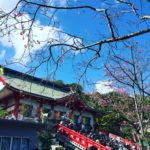
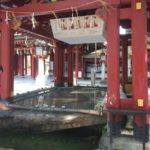
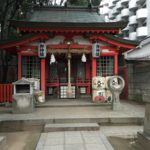
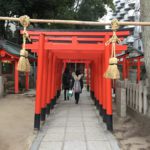
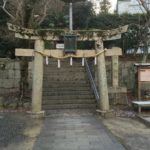
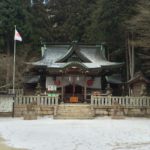
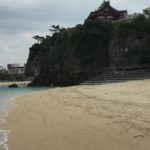
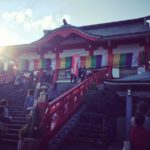
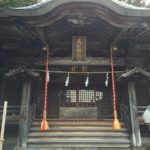
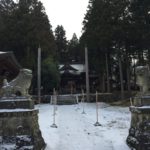
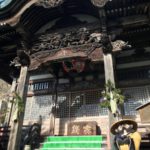
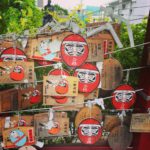
3 thoughts on “Temples 寺 and Shrines 神社 in Okinawa”
Comments are closed.